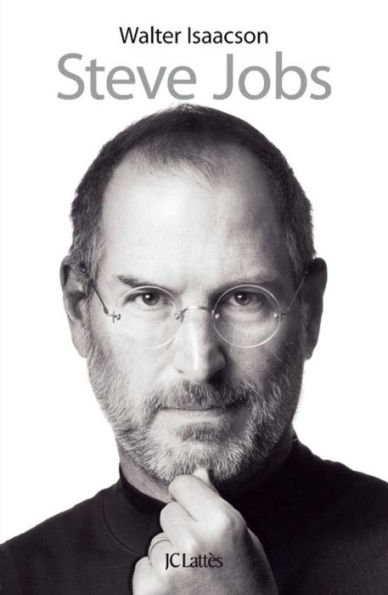Suggéré par le créateur d’Apple, qui fait face à une maladie redoutable, Steve Jobs, à partir de plus de quarante entretiens menés sur plus de deux ans et d’interviews d’une centaine de membres de sa famille, amis, rivaux, concurrents et collègues, le livre retrace l’incroyable vie et l’extraordinaire personnalité d’un génie, perfectionniste et hyperactif, qui a révolutionné les ordinateurs, les films d’animation, la musique, les téléphones, les tablettes tactiles et l’édition numérique. Steve Jobs est désormais l’icône absolue de l’inventivité. Il a compris qu’associer la créativité à la technologie était devenu essentiel. Steve Jobs a bien sûr collaboré au livre mais n’a demandé aucun droit de regard sur ce qui est écrit, ni même de le lire avant la publication. Il n’a imposé aucune limite, au contraire, il a encouragé son entourage à parler librement. « Il y a beaucoup de choses dont je ne suis pas fier, dit-il, notamment la façon dont, à vingt-trois ans, j’ai géré la situation lorsque ma petite amie est tombée enceinte. Mais je n’ai pas de cadavres dans le placard que j’essaie de cacher. » C’est avec une extrême franchise que Steve Jobs parle des personnes avec qui il a travaillé ou été en concurrence. Il peut profondément exaspérer les gens autour de lui. Ses amis, ennemis et collègues évoquent sans langue de bois ses passions, ses démons, ses désirs, son intransigeance, et son obsession du contrôle qui ont forgé sa vision des affaires et les innovations qui en ont découlé. La personnalité de Steve Jobs et les produits qu’il crée sont étroitement liés, comme les différentes parties d’un système intégré – tous les produits Apple et ses logiciels participent de cette logique. Le parcours de Jobs est exemplaire, un modèle en terme d’innovation, de caractère, de direction d’entreprise et de valeurs.
Suggéré par le créateur d’Apple, qui fait face à une maladie redoutable, Steve Jobs, à partir de plus de quarante entretiens menés sur plus de deux ans et d’interviews d’une centaine de membres de sa famille, amis, rivaux, concurrents et collègues, le livre retrace l’incroyable vie et l’extraordinaire personnalité d’un génie, perfectionniste et hyperactif, qui a révolutionné les ordinateurs, les films d’animation, la musique, les téléphones, les tablettes tactiles et l’édition numérique. Steve Jobs est désormais l’icône absolue de l’inventivité. Il a compris qu’associer la créativité à la technologie était devenu essentiel. Steve Jobs a bien sûr collaboré au livre mais n’a demandé aucun droit de regard sur ce qui est écrit, ni même de le lire avant la publication. Il n’a imposé aucune limite, au contraire, il a encouragé son entourage à parler librement. « Il y a beaucoup de choses dont je ne suis pas fier, dit-il, notamment la façon dont, à vingt-trois ans, j’ai géré la situation lorsque ma petite amie est tombée enceinte. Mais je n’ai pas de cadavres dans le placard que j’essaie de cacher. » C’est avec une extrême franchise que Steve Jobs parle des personnes avec qui il a travaillé ou été en concurrence. Il peut profondément exaspérer les gens autour de lui. Ses amis, ennemis et collègues évoquent sans langue de bois ses passions, ses démons, ses désirs, son intransigeance, et son obsession du contrôle qui ont forgé sa vision des affaires et les innovations qui en ont découlé. La personnalité de Steve Jobs et les produits qu’il crée sont étroitement liés, comme les différentes parties d’un système intégré – tous les produits Apple et ses logiciels participent de cette logique. Le parcours de Jobs est exemplaire, un modèle en terme d’innovation, de caractère, de direction d’entreprise et de valeurs.

Steve Jobs

Steve Jobs
eBook (French-language Edition)
Related collections and offers

Product Details
| ISBN-13: | 9782709638821 |
|---|---|
| Publisher: | JC Lattès |
| Publication date: | 10/26/2011 |
| Series: | Essais et documents |
| Sold by: | Hachette Digital, Inc. |
| Format: | eBook |
| File size: | 2 MB |
| Language: | French |
About the Author

